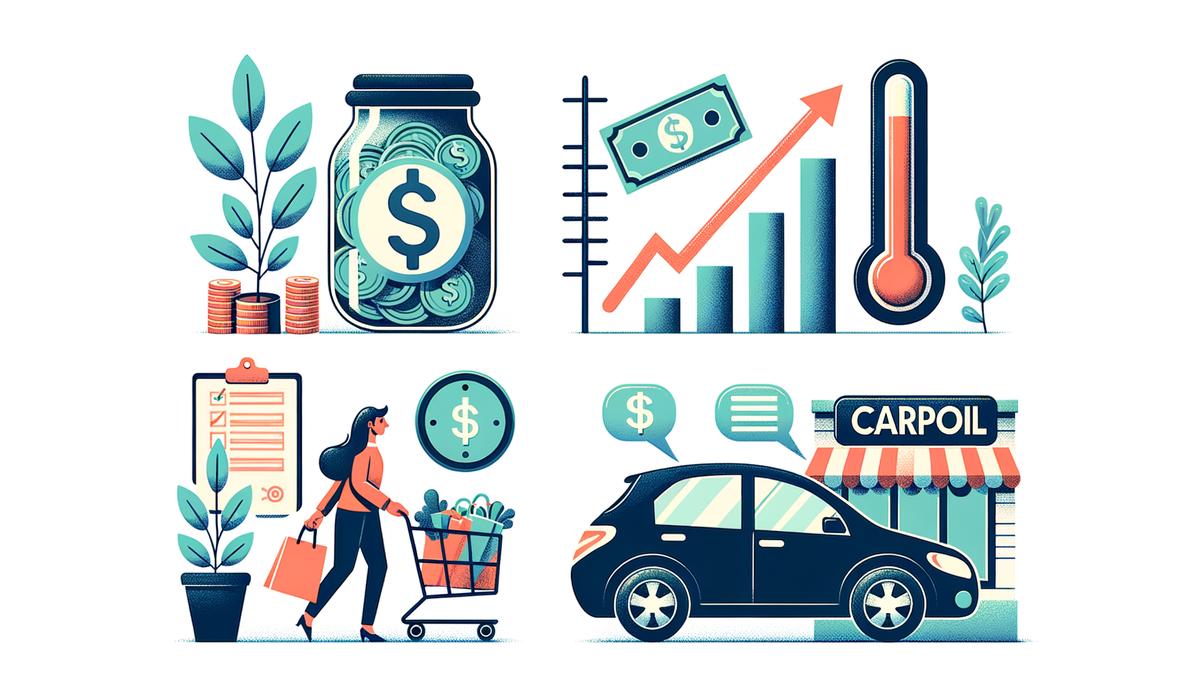Cost savings analysis stands as a critical tool for businesses aiming to streamline their operations and enhance their financial health without compromising on quality or efficiency. This process, while seemingly straightforward, requires a keen eye for detail and a strategic approach to identify areas where expenses can be reduced without affecting the core functionalities of the business. As we navigate through the intricacies of cost savings, it becomes evident that this is not just about cutting costs but about making smart decisions that contribute to the long-term success and sustainability of the company.
Understanding Cost Savings Analysis
Cost savings analysis is a tool businesses use to cut costs wisely. It involves looking closely at company spending to find places where money can be saved without hurting what the company produces or how it operates. This sounds easier said than done, but, with the right strategies, many companies find they can trim the fat without sacrificing the meat.
One common area for cost reduction opportunities comes from operational efficiencies. By evaluating the steps in a process, from start to finish, businesses often discover redundant actions that can be eliminated or combined with other tasks. This might mean automating certain manual processes with software so employees can focus on work that adds more value to the company.
Procurement strategies also offer a goldmine for cost savings. This could involve negotiating better terms with suppliers or consolidating purchases to get bulk buying discounts. Every dollar saved on materials directly improves the bottom line, especially in industries where margins are tight.
Then there’s technology investment — a somewhat counterintuitive aspect of cost savings. Spending money on new technologies may seem like an added expense, but the right investments pay off significantly in the long run. For example, upgrading to more efficient machinery can lower production costs and reduce energy consumption. Similarly, adopting cloud computing solutions can reduce the need for in-house servers and the maintenance costs that go with them.
Through this lens, conducting a cost savings analysis isn’t just about cutting corners or making do with less. It’s about making smarter choices that streamline operations, reduce waste, and invest in growth areas. By focusing on areas that offer the biggest bang for their buck, companies can find meaningful ways to tighten their belts while positioning themselves for future success.
The knack lies in balancing immediate savings with long-term goals. It’s like navigating a ship through choppy waters; it takes skill, foresight, and sometimes a willingness to steer a new course to reach your destination efficiently and effectively. As businesses undertake this journey, the cost savings analysis becomes an indispensable map, guiding them toward financial sustainability and operational excellence.

Steps in Conducting a Cost Savings Analysis
When embarking on a cost savings analysis, the journey begins by closely assessing current expenses. This step demands an examination of every dollar spent, with an eye for spotting any patterns or inconsistencies that indicate wasteful expenditure. Documents such as monthly financial statements, past receipts, and contract terms serve as your initial roadmap.
Identifying potential savings areas often feels akin to looking for a needle in a haystack but comes with the added challenge of distinguishing between necessary expenses and those ripe for reduction. It requires a detailed evaluation of services and products, ensuring they still meet business needs efficiently and cost-effectively.
Quantifying savings is where the rubber meets the road. This involves comparing current spending to potential cost after implementing changes. It’s not enough to say, “We’ll save money by doing X”; you need solid numbers. This quantification rests on accurate data collection, analysis, and forecasting. Making assumptions without data to back them up can lead to missing the mark.
Setting realistic goals is essential for a successful cost savings analysis. Dream big but keep your feet firmly planted in reality. Goals should stretch your operations to improve while being achievable. They act as guiding stars that keep efforts focused and measure progress.
Stakeholder involvement is not merely beneficial; it’s a cornerstone of implementing changes effectively. Their insights can illuminate unseen cost-saving opportunities and provide invaluable feedback on proposed changes. Engaging stakeholders early on fosters a collaborative environment conducive to creative solutions.
Accurate data can’t be overemphasized. Decisions rooted in guesswork have shaky foundations at best. Utilize all available resources – from accounting software to departmental reports – for data collection. Ensuring the data’s reliability before embarking on analysis saves time and prevents costly missteps later.
The advent of software applications specifically designed for financial analysis transforms mountains of raw data into actionable insights. These tools offer features that automate many aspects of the analysis process, from tracking expenses in real-time to predicting future savings based on current trends.
Benchmarking against industry standards provides a reality check against your company’s performance. Are your expenses par for the course, or are they outliers? Knowing where you stand in comparison to peers illuminates paths for improvement and sets a clearer target for what’s achievable in terms of cost savings.
In preparing to conduct a cost savings analysis, laying down a foundation built on examining current expenses, spotlighting potential savings areas, and diligently calculating anticipated savings sets the stage for actionable strategies. Marrying these strategies with realistic goals, active stakeholder participation, precise data usage, leveraging technology, and benchmarking crafts a robust approach to unearth and capitalize on cost-saving opportunities.

Challenges in Cost Savings Analysis
Resistance to change presents a tricky obstacle in cost savings analysis, acting as a barrier for businesses striving for financial improvement. Employees and departments accustomed to traditional methods may view alterations with skepticism, endorsing a “if it isn’t broken, don’t fix it” philosophy. Fostering a culture that celebrates innovation and explicitly demonstrates the value and necessity of change becomes critical in surmounting this challenge.
Data inaccuracy is another formidable adversary in this landscape. Often, the data collected or available may be outdated, incomplete, or simply incorrect, skewing the analysis and leading to misguided decisions. To combat this, companies can invest time and resources in training staff on the importance of accurate data entry and maintaining up-to-date information. Implementing routine checks and balances can serve as a failsafe mechanism, ensuring the reliability of the data being used.
Predicting future costs and savings accurately is akin to walking through a maze blindfolded. The unparalleled unpredictability of market trends, economic conditions, and internal organizational changes makes foresight challenging. Incorporating a range of scenarios in the analysis can offer a spectrum of potential outcomes, providing a more flexible framework for decision-making. This approach acknowledges the inherent uncertainties and prepares the organization for diverse fiscal environments.
Achieving stakeholder buy-in is essential yet often arduous. Clear communication of the analysis’ objectives, potential impact, and alignment with broader business goals can facilitate this process. Engaging stakeholders early and often, soliciting their input, and addressing their concerns can create a sense of ownership and commitment to the project’s success.
Maintaining flexibility throughout the analysis process allows businesses to adapt to unforeseen circumstances or information. This agility can be the deciding factor in the effectiveness of cost-saving strategies, enabling timely adjustments in response to real-world feedback and outcomes.
In essence, tackling these challenges demands a concerted effort towards building a proactive, detail-oriented, and adaptable organizational culture. By embracing these values, businesses can navigate through the complexities of cost savings analysis, leading to sustainable financial health and operational agility.

Case Study: Real-World Cost Savings Analysis
Prioritizing Employee Training and Development:
One leading corporation underscored the essence of enriching its workforce’s skill set as a preemptive strike towards cost efficiency. The company noticed that continuous employee education led to better performance and innovation, which, in return, lowered operational costs. They rolled out a comprehensive training program tailored to upgrade their employees’ expertise and adaptability in handling contemporary tools and methods. Noteworthy was their shift towards e-learning platforms, which reduced the training costs by half compared to traditional in-person seminars and workshops.
Adjusting the Supply Chain Dynamics:
Facing a challenging market fluctuation, a renowned manufacturing firm took a diligent step to reassess its supply chain. The focus was on identifying and eliminating bottlenecks that caused delays and incremental costs. Employing a just-in-time inventory system dramatically reduced their storage fees and minimized wastage due to unsold products. Further, they negotiated longer payment terms with suppliers and better rates for bulk purchases, significantly stabilizing their cash flow while enhancing the capacity for strategic investments.
Optimizing Energy Consumption:
A multinational enterprise with substantial energy expenditure integrated an advanced, greener approach by installing smart grids and energy-efficient systems across its operations. This transition wasn’t merely about reducing the carbon footprint but also curtailed energy spending remarkably. Solar panels were installed on the vast expanses of unused roof space, and LED lighting replaced conventional bulbs, reflecting immediate savings in electricity bills and maintenance costs. They further incentivized departments to lower energy usage by introducing a rewards system for the most improved sections quarterly.
Redefining Remote Work:
In the wake of digital transformation, a tech giant embraced remote work as a permanent option for its employees. Deep analysis revealed that by decreasing the amount of required office space, coupled with a decrease in utilities and office supplies, operating costs decreased sharply. Additionally, this move boosted employee satisfaction and retention, directly influencing productivity levels and reducing recruitment and training costs associated with high turnover rates.
Vendor Consolidation:
A prominent retail chain discovered cost-saving potentials in consolidating its vendor list. By reducing the number of vendors, they leveraged larger orders for better pricing and reduced shipping costs. Finding suppliers who offered multiple products or services negated the need for several specialized vendors. The ancillary benefits included improved relationship management, easier quality control, and streamlined ordering processes, which further economized time and resources.
Taking advantage of Government Rebates for Green Initiatives:
An automotive company invested in energy-saving initiatives not only for environmental responsibility but also for financial advantage. Initiatives like transitioning to renewable energy sources and deploying energy-efficient manufacturing processes qualified them for government rebates and tax deductions. The savings gleaned from these incentives were directed towards R&D, translating to innovative designs and processes that set the company apart in market competition.
Each example above elucidates a strategic route towards realizing significant expenditure reduction. These companies thrived by maintaining a delicate balance between optimizing current operations and forecasting future gains reliably, embodying a holistic approach to cost-saving analysis.

Leveraging Technology for Cost Savings
Enhancing cost savings analysis with modern technology starts by automating mundane tasks, allowing analysts to dedicate more time to strategic decision-making. Automation tools can quickly process vast datasets, identifying patterns and anomalies that may indicate spending inefficiencies or opportunities for savings that might go unnoticed in manual reviews.
Software solutions offer unparalleled precision in forecasting, utilizing historical data to predict future spending patterns. By understanding these trends, businesses can make informed decisions on where to cut costs without sacrificing quality or productivity.
Artificial intelligence (AI) and machine learning (ML) technologies go a step further by not only analyzing past and present data but also by learning from it. These technologies can suggest actionable cost-saving measures that are customized to the business’s unique operational characteristics and financial goals. For instance, AI can recommend adjustments to inventory levels based on predicted market demand, thereby reducing holding costs.
Integration of cloud-based platforms facilitates real-time collaboration among team members, regardless of their physical location. This means that cost-saving strategies can be developed, deployed, and monitored efficiently, ensuring all stakeholders are on the same page.
Emerging technologies such as blockchain offer transparency in transactions, reducing fraud and unnecessary expenses. By streamlining the supply chain and making transactions transparent, companies can save on costs associated with procurement and logistics.
Predictive analytics empowers businesses to move from reactive to proactive cost management. By analyzing data trends, companies can anticipate market changes and adjust their strategies accordingly, avoiding potential losses and leveraging opportunities for saving.
Customizable dashboards provided by many technology platforms give executives a clear view of financial metrics, including areas where costs can be trimmed. This visibility enables quicker decision-making and helps align cost-saving measures with business objectives.
Robotics Process Automation (RPA) can be applied to automate repetitive tasks such as data entry, invoice processing, and payroll, freeing up human resources for more value-added activities. This not only saves on labor costs but also reduces errors that can lead to financial losses.
In conclusion, by harnessing the power of technology, businesses can transform their cost savings analysis into a powerful tool for financial optimization. These high-tech approaches not only streamline workflows but unlock new avenues for identifying and implementing cost-saving measures, ultimately contributing to a more financially sustainable and competitive business model.

In conclusion, the essence of cost savings analysis lies in its ability to guide businesses towards financial optimization through strategic decision-making. By focusing on areas with the most significant potential for savings, companies can achieve a delicate balance between reducing expenses and fostering growth. This approach not only ensures financial sustainability but also strengthens the company’s competitive edge in an increasingly challenging business landscape.
Writio: The AI content writer that revolutionizes blog writing. This article was written by Writio!
Leave a Reply